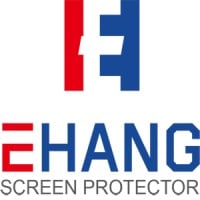
Guangzhou Ehang Electronics Co., Ltd.
Guangzhou Ehang Electronics Co., Ltd.. was formally established in 2011 and has a complete R&D, production base and sales network. The company specializes in R&D, production and sales of various polymer film materials, which are mainly used in nearly ten different fields such as mobile phone screen protectors, biomedical testing films, automotive vehicle clothing films, and construction engineering films. The company has more than 100 employees, 40% of which are R&D personnel. The factory covers an area of nearly 8,000 square meters, with complete hardware facilities and nearly 1,000 square meters of dust-free workshops. The company has successively introduced a number of advanced automatic production equipment. In line with the product concept of "only for high-quality products", the company has passed the German TUV Rheinland ISO9001, ISO14000, Sedex, BSCI, intellectual property management system, etc., and has applied for 40 trademarks and more than 70 patents. The company has more than 800 long-term and in-depth cooperation customers at home and abroad, and its products are exported to more than 60 countries in Southeast Asia, the Middle East, North America, Europe, and South America. The concept of cooperation has won unanimous praise and recognition from domestic and foreign customers.






